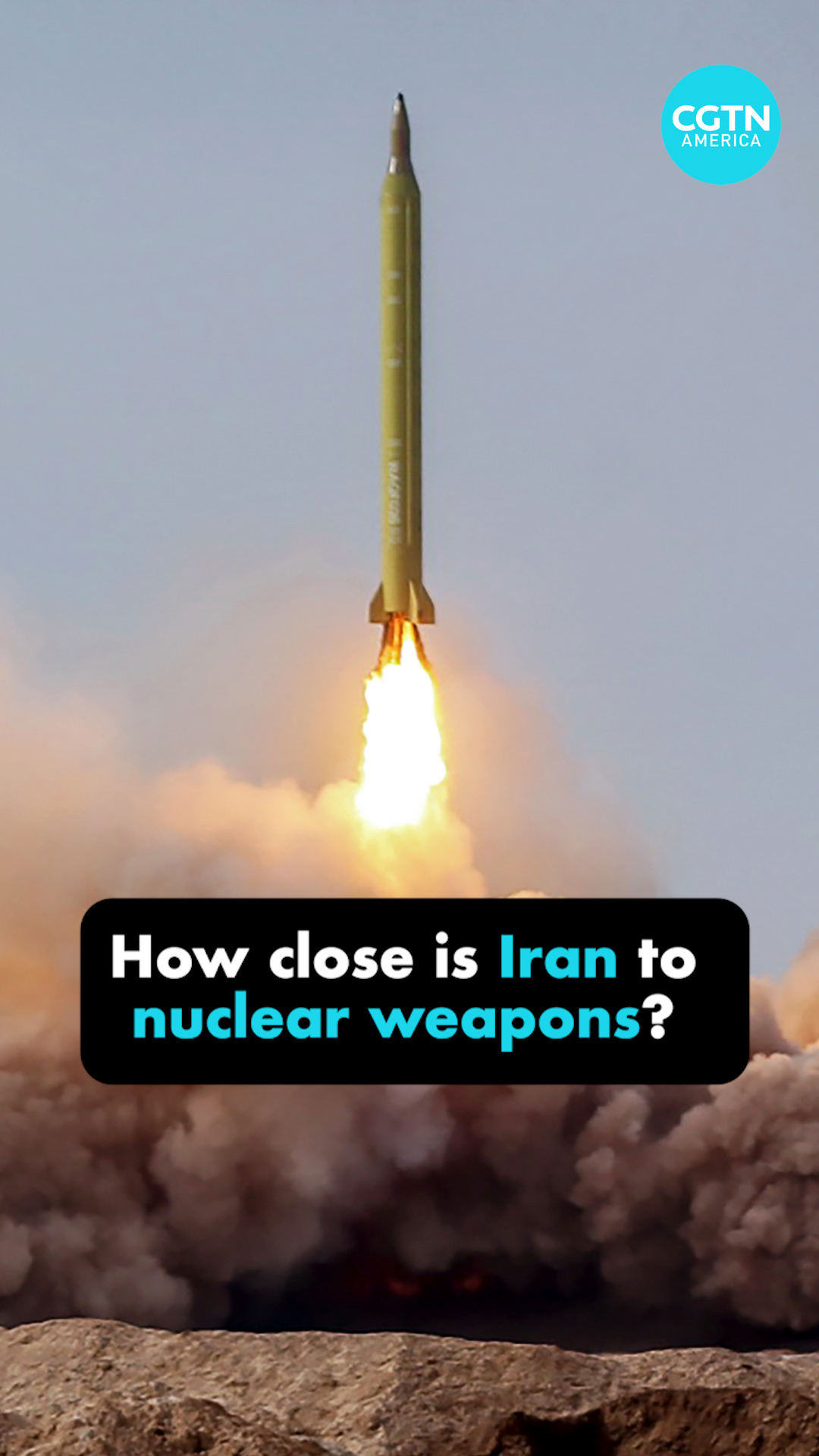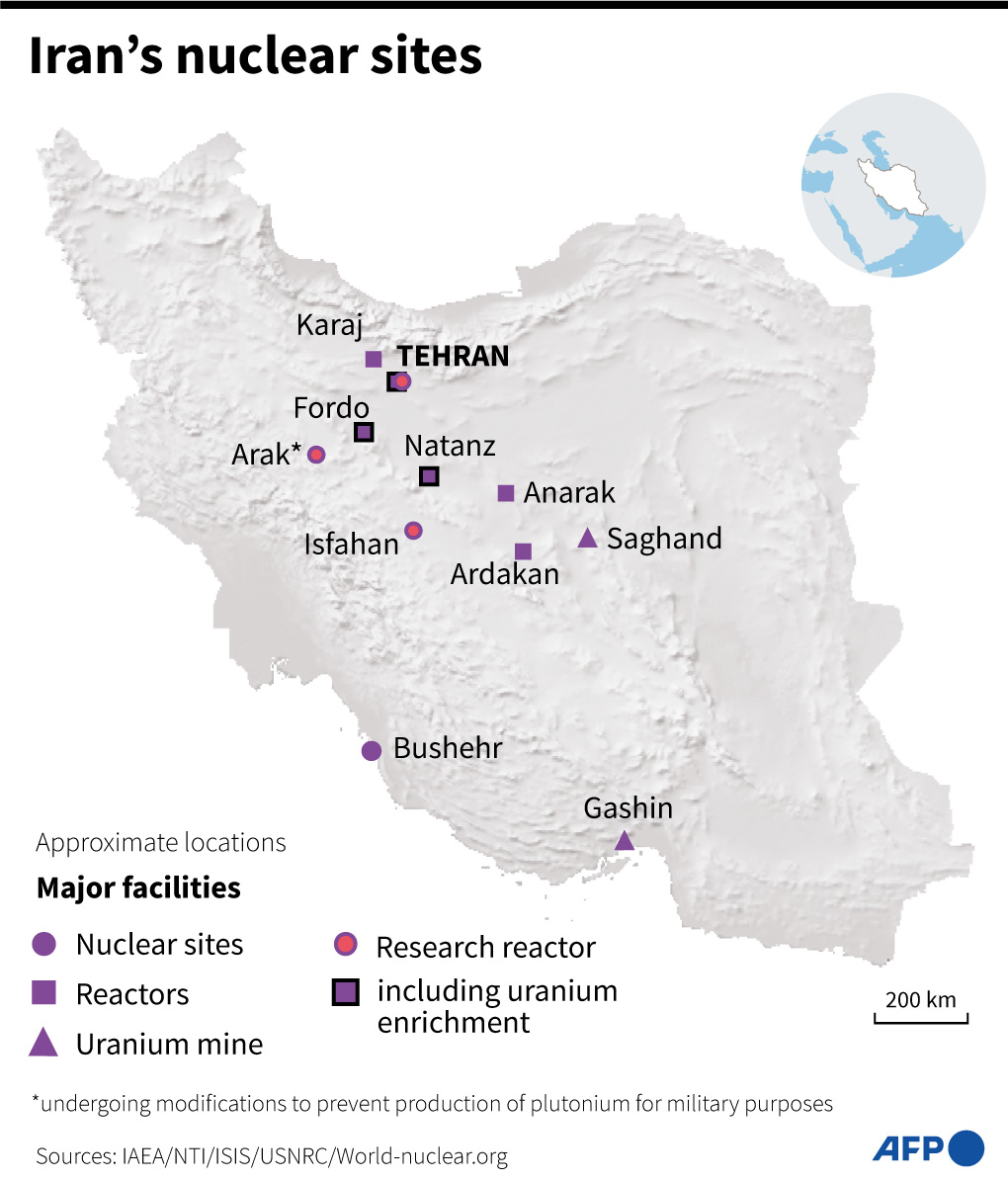03:41

Iran is closer than ever to a nuclear weapon.
The latest International Atomic Energy Agency report suggests that Iran has enriched a small amount of Uranium to 83.7%, very close to weapons grade.
Iran says “unintended fluctuations” may have happened in the enrichment levels.
Iran can now build a nuclear bomb within a few weeks.
"Iran is a latent nuclear power," said Ali Akbar Dareini, researcher and writer for the journal of the Center for Strategic Studies in Tehran. "That means Iran has the technological capability to build a nuclear weapon if it makes a political decision to do so. Iran has not made a political decision to weaponize its nuclear program, but obtaining the technology, possessing the technology to enrich uranium creates deterrence by itself."
What happened with the JCPOA deal?
The 2015 Joint Comprehensive Plan of Action or the JCPOA deal, signed by the P5+1 countries (China, France, Russia, UK, U.S. and Germany), prevented Iran from developing nuclear weapons and allowed monitoring by IAEA inspectors.
In return, Iran received relief from crippling economic sanctions.
"Iran's breakout capacity was just three months. But after it's implemented the JCPOA, this breakout capacity was expanded into one year. So Iran gave Iran gave a lot of concessions to do to the world powers in return for economic benefits," added Mr. Dareini.
However, many critics saw this deal as "flawed", saying that restrictions are only on Iran’s nuclear weapons program and no effective restrictions on Iran’s ballistic missile program or other aggressive policies and behaviors.
Including then U.S. President Donald Trump. In 2018, Trump unilaterally pulled out of the JCPOA agreement.
Since then, Iran has been openly enriching uranium to 60% purity.
"The agreement was not perfect, but it still stop Iran from advancing and in some ways regressed Iran in some of its advancements," said Meir Litvak, Professor at Tel Aviv University. "Israel opposed the JCPOA and played a key role in convincing President Trump to withdraw from the agreement. What happened was that when Trump withdrew from the agreement that Iran did not violate from 2015 to 2018. After 2020, Iran began to violate the agreement. What Iran did was to not only have more nuclear centrifuges than before, it enriched large quantities of uranium."

Map of Iran locating nuclear sites/AFP
Map of Iran locating nuclear sites/AFP
Iran has one nuclear power plant and many underground nuclear facilities.
The sites are a regular target of Israeli air raids and attacks.
"Israel has been following the Begin doctrine, and that is a doctrine that seeks to prevent any state in the Middle East from going nuclear. They launched attacks against Iraq's Osirak reactor in 1981 and the facilities, suspected facilities in Syria in 2007 as part of this doctrine," said Mr. Dareini.
"They (Israel) have tried to do the same against Iran to launch similar preemptive strikes against Iran. But Iran had learned important lessons from those attacks,"added Mr. Dareini. "It spread its nuclear facilities throughout the vast country and built its nuclear facilities in multiple locations deep inside the mountains to protect them from any attack. For instance, Iran's Fordo nuclear uranium enrichment site is 90 meters below the mountains. It's right inside the rock."

The process of enriching uranium by using a centrifuge/AFP
The process of enriching uranium by using a centrifuge/AFP
How are nuclear weapons made?
Making a nuclear weapon is a long and complex process.
To generate power, uranium is enriched to just five percent. To make a nuclear bomb, Uranium must be enriched to at least 90 percent.
Uranium is made up of two isotopes: 99.3 percent is uranium-238 and 0.7 percent is uranium-235. The latter is used to produce nuclear energy.
To separate the two isotopes, centrifuges are used. The heavier U-238 is discarded and the lighter U-235 is re-injected into the next centrifuge.
Many centrifuges are needed to obtain a significant amount of useable uranium-235.
Plutonium can also be used to create nuclear bombs. It is produced with uranium in nuclear power reactors. The uranium is separated off and the plutonium extracted.
It takes some 25kg of Uranium-235 or eight kilograms of Plutonium-239 to make a nuclear bomb.
The final challenge is actually building a device with a detonating system and explosives capable of triggering the required nuclear fission chain reaction.
Middle East on alarm
Many Mideast countries such as Türkiye and Saudi Arabia, and some of Israel’s allies or strategic partners, have made significant advances in their nuclear programs.
In January 2023, U.S. and Israeli forces conducted their largest ever bilateral exercises, many of the tasks necessary to hammer down Iran’s nuclear program.
While Iran maintains that its nuclear program is solely for peaceful purposes, experts have cautioned that the country's recent violations of agreements have shortened the timeframe for it to potentially acquire enough weapons-grade uranium to build a nuclear bomb.
Will the world come back to the negotiating table? Only time will tell.
For more, check out our exclusive content on CGTN Now and subscribe to our weekly newsletter, The China Report.